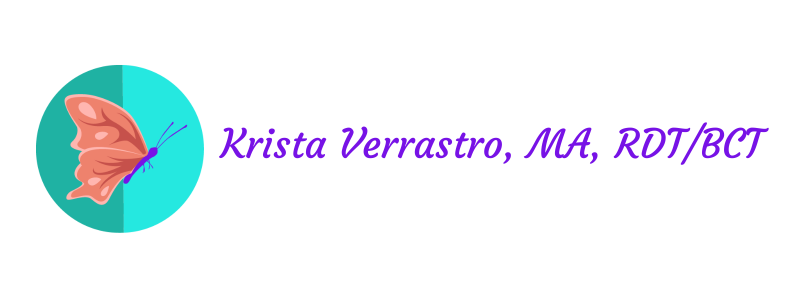
Deep breathing is one of the most popular healthy coping skills that gets talked about, and with good reason.
Multiple studies show that it has numerous physical and mental health benefits. It decreases pain, reduces blood pressure, increases energy levels, reduces inflammation, improves digestion, increases detoxification by stimulating the lymphatic system, relaxes the body and mind, reduces anxiety and depression, and more.
Despite the popularity and ample benefits of deep breathing, how to actually practice it seems to get less attention. When I talk about deep breathing with therapy clients, they are often only aware of how to do it by taking a sort of mental pause and consciously taking breaths deep into their stomachs as opposed to shallow breaths in their chests. While this basic concept of deep breathing is a good start, there is so much more that can be said about it.
There are many ways to practice deep breathing, which is great because not every kind is helpful for every person. As with most things in life, I believe that having a large repertoire to choose from is healthy because it gives us flexibility.
General tips for deep breathing
• Sit comfortably and with a straight back. You may also lie down.
• You may wish to place a hand on your chest and the other on your stomach to ensure that your deep breaths are reaching your stomach.
• Best practice for deep breathing is to inhale through your nose and exhale through your mouth. However, if you cannot or prefer not to do so, it is okay to both inhale and exhale through either your nose or mouth.
• Count or say words silently to yourself and do so slowly (kind of like when you were a child and would count seconds by saying “one Mississippi, two Mississippi, three Mississippi…”).
• Repeat whatever pattern you are practicing however many times you need to in order to obtain the benefits you are seeking from deep breathing, or pick a number of times to repeat it that you think is beneficial to you (e.g. maybe between five to ten times).
• Experiment with several types of deep breathing so that you can discover which work best for you. Try these different ways when you are not in serious distress so that when you are you will know which ones work best to calm you.
• You’ll notice that some of the following techniques involve holding your breath for short periods of time. Studies have shown that holding your breath has health benefits, but this can feel uncomfortable at times. It is okay to opt for techniques that don’t include this if it is uncomfortable for you.
Counting
One of the most common ways to keep track of deep breathing is by counting while you inhale and exhale. It is commonly thought that breathing for at least four counts is ideal because any less is not a deep enough breath into the abdomen.
Here are some ways to use counting to practice deep breathing:
• Inhale and exhale for the same counts (e.g. inhale as you count to four, exhale as you count to four, and repeat). I myself like to count between seven and ten to ensure that I am truly taking deep breaths.
• Inhale, pause, exhale, and pause for the same counts (e.g. inhale as you count to four, hold your breath for four counts, exhale as you count to four, hold your breath for four counts, and repeat). When done in fours as described in the example, this is called Four Square Breathing.
• Use “4-7-8 Breathing”: inhale as you count to four, hold your breath as you count to seven, and exhale as you count to eight. Developed by Dr. Andrew Weil, this type of breathing is influenced by yogic breathing techniques and is thought to be excellent for helping people fall asleep. It is recommended that you not repeat this pattern more than four times when starting to practice it.
Saying a word, phrase, or mantra
Instead of counting during inhales and exhales, some people prefer to say words, phrases, or a mantra (which can be a sound or syllable instead of a word).
Here are some examples of using words, phrases, and mantras in deep breathing:
• Simply say “inhale” as you inhale and “exhale” as you exhale.
• Repeat a word that brings you comfort as you inhale and exhale, such as “rainbows” or “kittens”. You can also say one word as you inhale and another as you exhale.
• Repeat a phrase as you inhale and exhale, such as “I am safe” or “I can do this”. As mentioned above, you can alternate saying such phrases while inhaling and exhaling.
• Tell yourself “In with the new” as you inhale and “Out with the old” as you exhale. Some people prefer to start with the exhale for this one and in general for deep breathing, and that is okay to do. In fact, some studies have shown that starting with a deep exhale can be even more beneficial because it fully empties out your lungs to help them fill up better during the next inhale.
• Inhale deeply without saying anything, and then exhale by making the “om” sound aloud (pronounced more like aum or awe-oo-mm) until you run out of breath. This yogic technique is thought to help create a sense of relaxation by slowing the nervous system and calming the mind. It is also thought that it creates a sense of connection and oneness because this is the frequency at which all things in the universe vibrate.
Contact me
Which techniques do you plan to try? Which ones do you already do and benefit from? Feel free to comment below.
If you live in the Baltimore area and would like to work with a therapist to learn more creative healthy coping skills like this, feel free to contact me for a free 15 minute consultation.
* This article originally appeared on the Psychology Arts website, which is no longer active.
